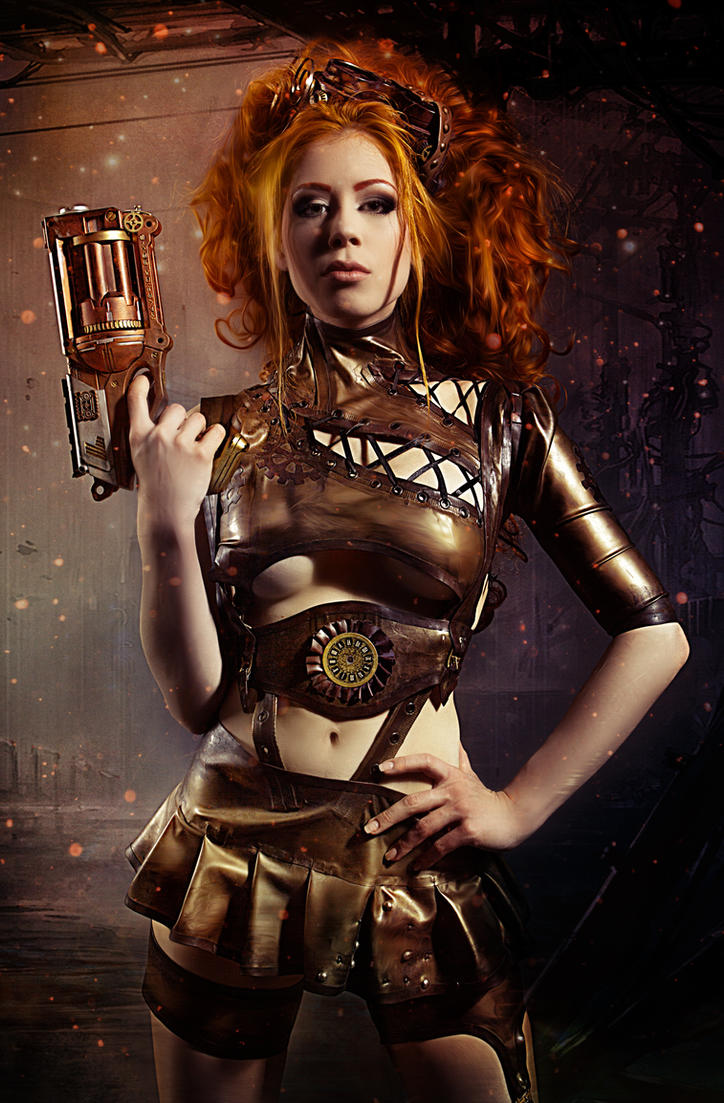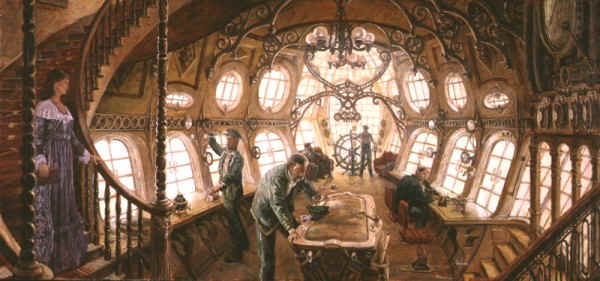Extolling the Virtues of Steampunk Subgenres
- by Miss Alexandrina
Yes, WTCB is more NeoVictorian than Steampunk – rather than being set in the 19th Century, NeoVictorian or ‘Victoriana’ novels are set in the modern century with Victorian manners, class systems and technology as I hope WTCB is, whilst being set in 2010 – but with the devising of my new Steampunk novel ‘H’, I’ve realised how comfortable I feel in a world surrounded by the tautness of order and rules, a la the Victorian era. I don’t see what is too much of a problem by putting on a ‘steamsona’, a ‘steampunk-person’; following the rules of late 1800 and early 1900 in a modern world can actually be intriguingly healthy.
But Steampunk is so wide that, like any cross-curricula genre, one can dive into so many different subsets and interpretations.
The term is not about proscriptive designing of worlds, but about how one lives what might have been. Alternate past, after all. Hence I ask: what does Steampunk mean to you?
Is it an art? Well, everything is an art (arguably, though one might suggest that every art is a science of using logic…but I shan’t get into that here. That thought is for the other blog.) – but is your Steampunk a visual art? Is it in the creative notions, the way one devises not only the worlds of dirigibles, clockwork (like the table-clock on the blog-bar above) and torn power of guns and rough-style in conceptualisation, but also in paintings with characters looming in a Steamy sky. It may be a talent I lack, but I have seen some gorgeous artwork online.
Is it a craft? Is your Steampunk in the act of changing mechanical bits-and-bobs into touchable decorations? Because of its growing trend, Steampunk shops (especially those on Etsy) have sprung up with trades – just as those shoppeswould have by trade in the true century.
Steampunk is a lifestyle for some. As well as writing, Steampunk extends to music (and film and popular culture, etc). Far be it for me to list how Steampunk has been influenced by the cultures and its own budding subgenres, but one definitely sees Steampunk changed by whom is its author. Some people of colour create focuses and characters of colour and settings that include dashes of their culture as it might have been in the ‘East’ in a Steampunk past; some British authors use their own knowledge of manners and make that one of the core values of Steampunk. Of course, that’s great – a universal community from one idea. Perhaps because the genre of Fantasy centres on a purely speculative past, those who were treated with scorn in the real past get a chance to live more freely in the Steampunk one.
Although it’s not a route into which I like to venture, some Steampunk depicts a barren land and a cast of Western-esque characters, steam pistols and leather utilities at which the everyday Victorian might pale, with tough, angular styles seen more in gothic fingerless gloves than classic royalty elegance. “Endless prairies of the North,” as described in Paul Shapera’s New Albion I track of The Dolls of New Albion opera.
What does it mean to me? Fashion, but not in a superficial way: dressing in an appropriate way, complete with the historical requirements. I’m not a fan of Steampunk representations of ladies with external corsets and higher-than-ankles (or, at a push, knee-and-higher) dresses. Even if the alternate past accepts this sort of anachronism, to me it jars with what would show the era as it is.
There’s a difference between an autostat, a zeppelin and a dirigible, you know, and these details add colour to one’s choice of type of Steampunk. I prefer the latter, myself, with its traditionally navigable quality (I hear your raised eyebrows: of course the linguist chooses the etymological definition: ‘dirigible’ was originally French for steerable), implying that the use of coal/steam to fly has sense in power, despite its non-rigidity. That opinion might be questioned by the traditional use – as opposed to the traditional meaning – but I’m certainly allowed to twist the proper past a little ;)
Too, as Lord Pikedevant, Esq. has sung, Steampunk is not so much cogs as mechanisms, not so much dress as attitude. Steampunk – for me – is as much about the way one holds one’s self and speaks and treats others as what one looks like. And, you know, the cogs have got to work. In the Victorian and progressive Industrial age, every piece of technology had a role to play and affected everyone on a near-daily basis. Whilst there are some great concepts in the land of Steampunk art, some simply don’t intrigue me because they clash with my understanding of ‘Steampunk’ as a working society tag.
And that’s all right, because the Steampunk world varies depending on its creator.
Source: missalexandrinabrant.wordpress.com




Interesting article some steampunk subgenres - Miss Alexandrina made some good points!
ReplyDelete